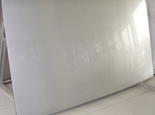304/ 1.4301 Stainless Steel Corrosion Resistance
Stainless steel 304/ 1.4301 is the most versatile and most widely used stainless steel. 304/ 1.4301 alloy is available in plate, sheet, strip and pipe. It has excellent forming and welding characteristics. Below is the detail of 304/ 1.4301 stainless steel corrosion resistance.

The Alloys 304 and 304L austenitic stainless steel provide useful resistance to corrosion on a wide range of moderately oxidizing to moderately reducing environments. The alloys are used widely in equipment and utensils for processing and handling of food, beverages, and dairy products. Heat exchangers, piping, tanks, and other process equipment in contact with fresh water also utilize these alloys.
Intergranular Corrosion:
Exposure of the 18-8 austenitic stainless steel to temperatures in the 800°F to 1500°F (427°C to 816°C) range may cause precipitation of chromium carbides in grain boundaries. Such steels are "sensitized" and subject to intergranular corrosion when exposed to aggressive environments. The carbon content of Alloy 304 may allow sensitization to occur from thermal conditions experienced by autogenous welds and heat-affected zones of welds. For this reason, the low carbon Alloy 304L is preferred for applications in which the material is put into service in the as-welded condition. Low carbon content extends the time necessary to precipitate a harmful level of chromium carbides but does not eliminate the precipitation reaction for material held for long times in the precipitation temperature range.
Stress Corrosion Cracking:
The Alloys 304, 304L, and 304H are the most susceptible of the austenitic stainless steel to stress corrosion cracking (SCC) in halides because of their relatively low nickel content. Conditions which cause SCC are: (1) presence of halide ions (generally chloride), (2) residual tensile stresses, and (3) temperatures in excess of about 120°F (49°C). Stresses may result from cold deformation of the alloy during forming or by roller expanding tubes into tube sheets or by welding operations which produce stresses from the thermal cycles used. Stress levels may be reduced by annealing or stress relieving heat treatments following cold deformation, thereby reducing sensitivity to halide SCC.
